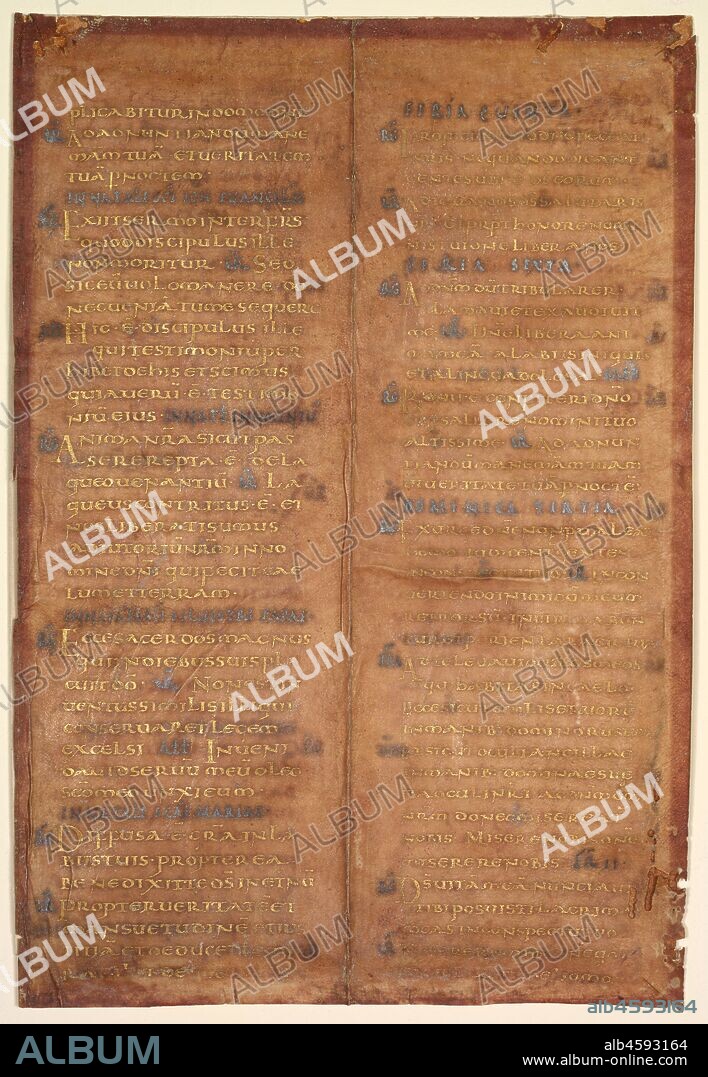alb4593164
Bifolium Excised from a Carolingian Gradual, c. 830-860. Creator: Unknown.

|
Añadir a otro lightbox |
|
Añadir a otro lightbox |



¿Ya tienes cuenta? Iniciar sesión
¿No tienes cuenta? Regístrate
Compra esta imagen.
Selecciona el uso:

Título:
Bifolium Excised from a Carolingian Gradual, c. 830-860. Creator: Unknown.
Descripción:
Ver traducción automática
Bifolium Excised from a Carolingian Gradual, c. 830-860. This rare leaf comes from a cantatorium or gradual, a book containing the chants to be sung during the Mass. Other leaves from the same book survive in Berlin and Trier. A bifolium, or double-leaf, it does not contain decorated letters but rather "emphasized" letters. These were enlarged and pushed out into the margins to call attention to the eye. Such emphasized letters originated in late classical times and were the precursor to the decorated initial developed by medieval scribes. The purple-stained vellum (now faded to a deep pink) with its text written in gold and silver inks (now turned black) suggested great luxury with its sumptuous appearance. In Mediterranean regions, the purple dye was obtained from murex, a shell-fish dye. In northern Europe, plant dyes were used as an alternative. Combined with the use of gold and silver ink (now turned black) a spectacular appearance was achieved that is traceable back to classical antiquity.
Crédito:
Album / Heritage Art/Heritage Images
Autorizaciones:
Tamaño imagen:
5304 x 7666 px | 116.3 MB
Tamaño impresión:
44.9 x 64.9 cm | 17.7 x 25.6 in (300 dpi)
Palabras clave:
 Pinterest
Pinterest Twitter
Twitter Facebook
Facebook Copiar enlace
Copiar enlace Email
Email
